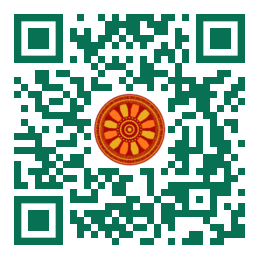
:: International Transaction Journal of Engineering, Management, & Applied Sciences & Technologies
http://TuEngr.com

ISSN 2228-9860
eISSN 1906-9642
CODEN: ITJEA8
FEATURE PEER-REVIEWED ARTICLE
Vol.12(3) (2021) |
Facial Image Recovery Model
 Alexander A. Kulikov, Andrey V. Rachkov, Evgeniy E. Chekharin (Department of Instrumental and Applied Software, Institute of Information Technologies, MIREA - Russian Technological University, RUSSIA).
Alexander A. Kulikov, Andrey V. Rachkov, Evgeniy E. Chekharin (Department of Instrumental and Applied Software, Institute of Information Technologies, MIREA - Russian Technological University, RUSSIA).
Disciplinary: Information and Software Engineering.
doi: 10.14456/ITJEMAST.2021.56
Keywords: Neural network; Image recognition; Image identification; Identification model; Facial image identification; Object image reprinting model (OIRM).
AbstractFor the issues of facial image modeling study, the key aspects of recognition (identification) are considered, differences between recognition and identification of facial images are considered. To solve identification difficulties, a model to recover a face image has been developed. The model novelty is that it represents a 3D-type object. Due to the fact that the object is presented in a 3D format instead of a 2D one, like the image, it enables generating basic object characteristics in whole. The proposed model can also be used to recover other image spatial objects. The recovery model of a facial image is trained through a multilayer neural network, "knowledge" is obtained sequentially. The practical significance of the model developed is the ability to solve the issue of human facial image identification in general, under conditions of hindrances and regardless of the angle transformation.Paper ID: 12A3N
Cite this article:
Kulikov, A. A., Rachkov, A. V., Chekharin, E. E. (2021). Facial Image Recovery Model. International Transaction Journal of Engineering, Management, & Applied Sciences & Technologies, 12(3), 12A3N, 1-10. http://doi.org/10.14456/ITJEMAST.2021.56
References
- Alghaili M., Li Z., Ali H.A.R. (2020) FaceFilter: Face Identification with Deep Learning and Filter Algorithm. Scientific Programming, 9. DOI: 10.1155/2020/7846264
- Chesalin A.N., Grodzenskiy S.Y., Nilov M.Yu., Agafonov A.N. (2019). Modification of the WaldBoost algorithm to improve the efficiency of solving pattern recognition problems in real-time. Russian Technological Journal, 7(5): 20-29. (In Russ.) DOI: 10.32362/2500-316X-2019-7-5-20-29
- Bulgakov V.G. (2014). Methodological foundations for human forensic identification and diagnosis by his dynamic features. Monograph, edited by A.M. Zinina. Moscow: Yurlitinform. 143.
- Tsunikov A.Y. (2016). Practice guidelines for the use of standards for design of interactive systems in termal imaging processing tasks. Russian Technological Journal, 4(5):55-62. (In Russ.) DOI: 10.32362/2500-316X-2016-4-5-55-62
- Fitzgerald R.J., Price H.L., Valentine T. (2018) Eyewitness identification: Live, photo, and video lineups. Psychology, Public Policy, and Law, 24, 307-325.
- Ilyin N.N. (2018). Human forensic and profile identification by video images: methodological foundations. Monograph, Moscow: Prospect, 123.
- Kortli Y., Jridi M., Falou, Atri M. (2020). Face Recognition Systems: A Survey. Sensors, 20, 342. 10.3390/s20020342.
- Kukharev G.A. (2001). Biometric systems: methods and means to identify person's identity. St. Petersburg: Polytechnic. 239.
- Maximov N.A., Tuchkin A.V. (1987). Analytical methods for the study of JTA flight test data processing. Moscow: MAI. 64.
- Noyes E., Hill M.Q., O'Toole A.J. (2018) Face recognition ability does not predict person identification performance: using individual data in the interpretation of group results. Cogn. Research 3, 23. DOI: 10.1186/s41235-018-0117-4
- Perepecherina I.O. (2015). Human forensic identification based on its genetic properties. Selected works: Moscow: Buki Vedi. 328.
- Rub?nov? E., Fitzgerald R.J., Juncua S., et al. (2020) Live Presentation for Eyewitness Identification is Not Superior to Photo or Video. Journal of Applied Research in Memory and Cognition, 10, DOI: 10.1016/j.jarmac.2020.08.009
- Shah J.H., Sharif M., Raza M., Azeem A. (2013) A Survey: Linear and Nonlinear PCA Based Face Recognition Techniques. Int. Arab J. Inf. Technol, 10, 536-545.
- Stadnik A.V. (2004) The use of artificial neural networks and wavelet analysis to increase efficiency in recognition and classification tasks. Thesis for candidacy of physical and mathematical sciences. Ivanovo. 88.
- Tropchenko A.A., Tropchenko A.Yu. (2012) Neural network methods to identifying human facial image. Priborostroyeniye, 10, 31-36.
- Vasin V.A. (2011). Information technology in neural network and pattern recognition process design in the clustered information processing systems. Moscow: Research Institute of PMT. 236.
- Visilter Yu.V. et al. (2007). Digital image processing and analysis exemplified by the IMAQ Vision LabVIEW. Moscow: DMK Press. 463.
- Zemlevsky A.D. (2017) Study of convolution neural network architecture to recognize images. Bulletin of Science and Education, 6(30), 36-43.
- Zimin A.M., Kirsanova L.Z. (1991). Forensic photo-profile examination. Edited by V. A. Snetkova, Z. I. Kirsanovs; United scientific and criminalist center. Moscow: UNCC. 88.
Other issues:
Vol.12(2)(2021)
Vol.12(1)(2021)
Vol.11(16)(2020)
Vol.11(15)(2020)
Vol.11(14)(2020)
Archives
Call-for-Papers
Call-for-Scientific PapersCall-for-Research Papers: ITJEMAST invites you to submit high quality papers for full peer-review and possible publication in areas pertaining engineering, science, management and technology, especially interdisciplinary/cross-disciplinary/multidisciplinary subjects.
To publish your work in the next available issue, your manuscripts together with copyright transfer document signed by all authors can be submitted via email to Editor @ TuEngr.com (no space between). (please see all detail from Instructions for Authors)
Publication and peer-reviewed process:
After the peer-review process (4-10 weeks), articles will be on-line published in the available next issue. However, the International Transaction Journal of Engineering, Management, & Applied Sciences & Technologies cannot guarantee the exact publication time as the process may take longer time, subject to peer-review approval and adjustment of the submitted articles.